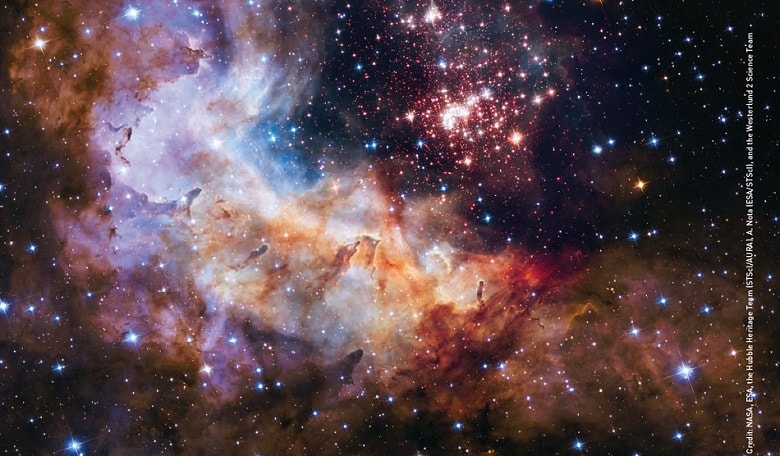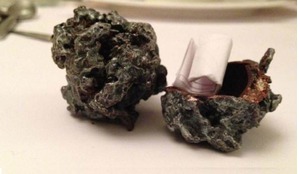Westerlund 2 — Hubble’s 25th anniversary image
This image of the cluster Westerlund 2 and its surroundings was released to celebrate Hubble’s 25th year in orbit and a quarter of a century of new discoveries, stunning images and outstanding science. The image’s central region, containing the star cluster, blends visible-light data taken by the Advanced Camera for Surveys and near-infrared exposures taken by the Wide Field Camera 3. The surrounding region is composed of visible-light observations taken by the Advanced Camera for Surveys.
The Pillars of Creation
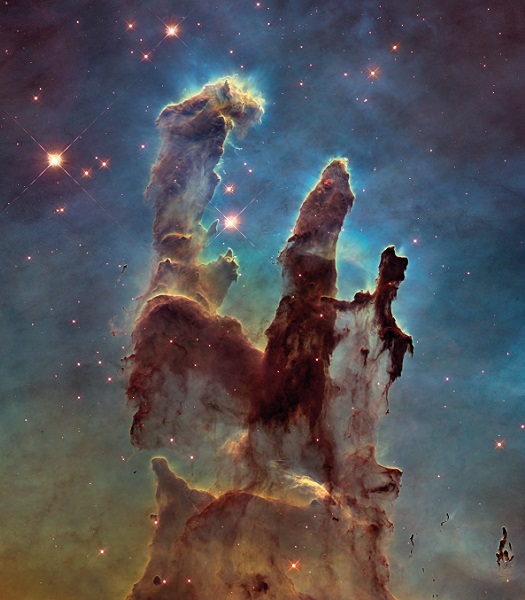 Credit: NASA, ESA/Hubble and the Hubble Heritage Team
Credit: NASA, ESA/Hubble and the Hubble Heritage Team
This image shows the Eagle Nebula’s pillars as seen in visible light, capturing the multi-coloured glow of gas clouds, wispy tendrils of dark cosmic dust, and the rust-coloured elephants’ trunks of the nebula’s famous pillars. The dust and gas in the pillars is seared by the intense radiation from young stars and eroded by strong winds from massive nearby stars. With these new images comes better contrast and a clearer view for astronomers to study how the structure of the pillars is changing over time.
Galaxies galore
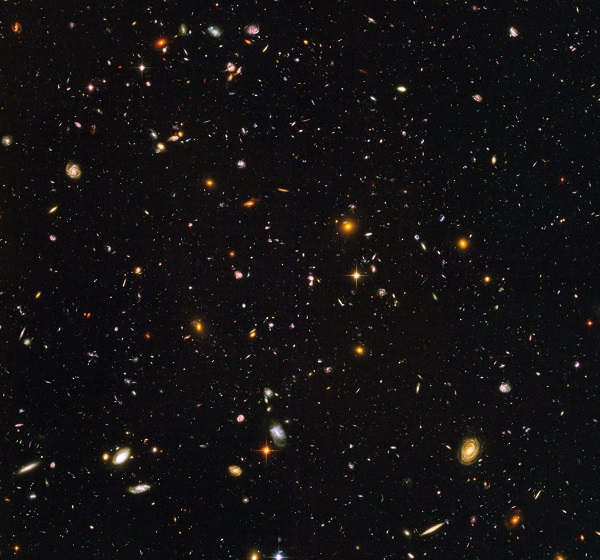 Galaxies galore
Galaxies galore
Galaxies, galaxies everywhere! This view of nearly 10,000 galaxies is the deepest visible-light image of the cosmos. Called the Hubble Ultra Deep Field, this galaxy-studded view represents a “deep” core sample of the universe, cutting across billions of light-years. The snapshot includes galaxies of various ages, sizes, shapes, and colours. The smallest, reddest galaxies, about 100, may be among the most distant known, existing when the universe was just 800 million years old. The nearest galaxies – the larger, brighter, well-defined spirals and ellipticals – thrived about 1 billion years ago, when the cosmos was 13 billion years old.
Hubble Mosaic of the Majestic Sombrero Galaxy
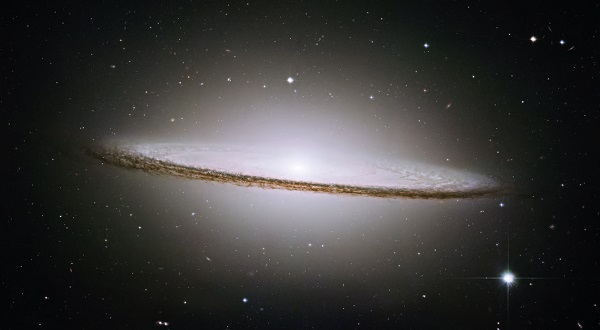 Credit: NASA/ESA and The Hubble Heritage Team STScI/AURA).
Credit: NASA/ESA and The Hubble Heritage Team STScI/AURA).
core encircled by thick dust lanes that comprise the spiral structure of the galaxy. As seen from Earth, the galaxy is tilted nearly edge-on. We view it from just six degrees north of its equatorial plane. This brilliant galaxy was named the Sombrero because of its resemblance to the broad rim and high-topped Mexican hat.
Extreme star cluster bursts into life in new Hubble image
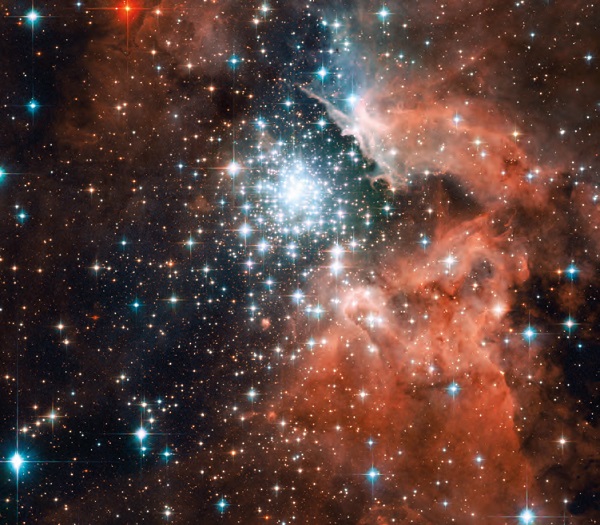 Credit: NASA, ESA and the Hubble Heritage (STScI/AURA)-ESA/Hubble Collaboration
Credit: NASA, ESA and the Hubble Heritage (STScI/AURA)-ESA/Hubble Collaboration
The star-forming region NGC 3603 contains one of the most impressive massive young star clusters in the Milky Way. Bathed in gas and dust the cluster formed in a huge rush of star formation thought to have occurred around a million years ago. The hot blue stars at the core are responsible for carving out a huge cavity in the gas seen to the right of the star cluster in NGC 3603’s centre. The Top 100 images are available at https://www. spacetelescope.org/images/archive/top100/





